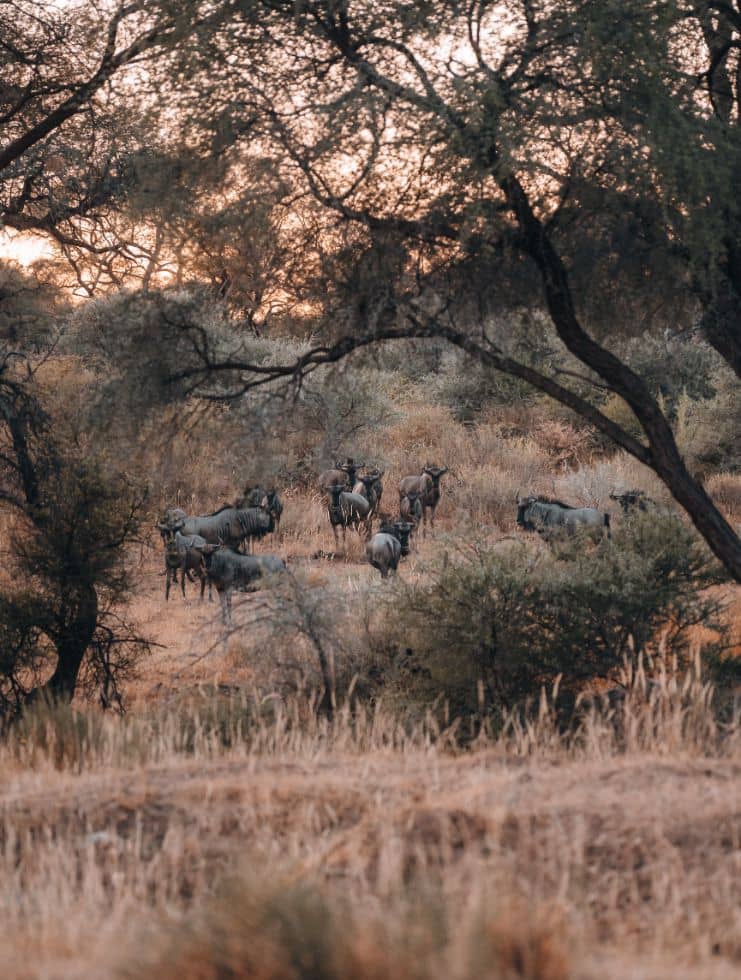
A Comprehensive Seasonal Guide to Africa
Africa, a continent of breathtaking diversity, offers a kaleidoscope of experiences ranging from wildlife safaris to beach holidays and cultural tours. The timing of your visit can significantly influence the quality of your experience, depending on your interests and the regions you plan to explore. East Cape Tours is here to provide you with an in-depth guide on when to venture into this majestic land for an adventure that resonates with your travel aspirations.
The dry winter months are ideal for wildlife viewing in countries like South Africa, Botswana, Namibia, Zambia, and Zimbabwe. As water becomes scarce, animals congregate around waterholes and rivers, making them easier to spot. The weather is cooler and less humid, providing comfortable conditions for safaris. This period also coincides with the peak season for viewing the majestic Victoria Falls, particularly around June and July when the water flow is at its most voluminous.
The summer months bring the rainy season, transforming the landscape into a vibrant green paradise. This is a fantastic time for bird watching as migratory species arrive, and the lush scenery makes for stunning photographs. However, be prepared for hotter, more humid conditions and thicker vegetation, which can sometimes make wildlife harder to spot.
Peak Season: From June to November, the Southern Right Whales migrate to the warmer waters off the South African coast, particularly around Hermanus, making it an ideal time for whale watching.
Considerations: The whale festival in September is a highlight, but early booking is recommended as this is a popular event.
Peak Bloom: The arid region of Namaqualand transforms into a vibrant carpet of wildflowers from late July to September, following the winter rains.
Considerations: The bloom is weather-dependent, and timing can vary, so it’s wise to monitor local reports for the best viewing times.
Peak Water Levels: The floodwaters from the Angolan highlands reach the delta around June and peak between July and August. This influx transforms the area into a watery paradise, attracting animals from miles around and offering spectacular game viewing opportunities.
Lower Water Levels: As the floodwaters recede, the delta’s landscape changes, revealing more land and concentrating wildlife around the remaining water sources. This period offers a different but equally rewarding experience.
Majestic Views: Following the rainy season, the Zambezi River swells, and Victoria Falls reaches its peak flow around April and May. This is when the falls are at their most powerful and dramatic, with an immense volume of water cascading over the edge and creating a thunderous roar and mist that can be seen from miles away.
Considerations: The heavy spray during peak flow can make it difficult to see the falls from up close and may drench visitors. Viewing platforms on both the Zambian and Zimbabwean sides offer different perspectives, but waterproof gear is recommended. This period is also excellent for aerial views of the falls, with helicopter and microlight flights providing breathtaking panoramas.
Great Migration: A highlight in Kenya and Tanzania, the dry season is when the Great Migration reaches its peak, especially from July to September. Witnessing this natural wonder is a once-in-a-lifetime experience.
Wildlife Viewing: Animals are easier to spot as they gather around water sources, and the risk of malaria is lower during these drier months.
Climbing Mount Kilimanjaro: For trekkers, this is the optimal time to attempt the summit of Africa’s highest peak, with clearer skies and less precipitation.
Green Season: The landscapes come alive with fresh growth, making for beautiful safari backdrops. This period offers a balance between good wildlife viewing and the beauty of the rainy season, with fewer visitors and competitive rates.
Challenging Conditions: While heavy rains can make travel difficult and some lodges close, the lush landscapes and abundance of newborn animals can offer rewarding experiences for those willing to face the challenges of the season.
Best Time: Although it’s possible year-round, the best times for gorilla trekking are during the drier seasons, from June to September and December to February. These periods offer easier hiking conditions and lower malaria risk.
Considerations: Trekking permits are limited and should be booked well in advance, especially if you plan to travel during peak seasons.
Best Times: For Kilimanjaro, the best climbing conditions are from late June to October and from late December to early March. Mount Kenya is best climbed from January to February and July to October.
Considerations: These periods offer the clearest skies and least precipitation, but they are also the busiest. Booking in advance ensures you secure a spot with a reputable guide service.
Ideal Weather: With cooler, drier weather, this is the perfect time for beach holidays, diving, and exploring the islands’ natural landscapes. The Seychelles, Mauritius, Madagascar, and Zanzibar each offer unique attractions, from vibrant coral reefs to lush rainforests.
Cultural Festivals: Check local calendars for cultural events and festivals that can add a rich layer to your island experience.
Hotter Climate: Expect warmer temperatures and higher humidity, with the chance of tropical storms, especially from January to March.
Lush Scenery: The islands are at their most vibrant, with fewer tourists making it easier to find secluded spots or negotiate lower rates for accommodation.
Sauti za Busara: A vibrant music festival held in February, showcasing a rich mix of African music.
Zanzibar International Film Festival: Taking place in July, this festival celebrates African cinema, music, and arts.
Considerations: These festivals are a fantastic way to experience local culture and festivities, but accommodation can fill up quickly, so plan ahead.
Best Time for Diving and Snorkeling: April, May, October, and November are ideal, offering calm seas and clear water visibility up to 30 meters. These months sit between the trade winds, providing the perfect conditions for underwater exploration.
Wildlife and Nature: The dry season from April to October is the best time for wildlife viewing, especially for seeing lemurs and exploring the national parks with more accessible trails.
When planning your trip to the Indian Ocean Islands, it’s crucial to consider both the general climate patterns and the unique experiences each island offers. Whether you’re seeking underwater adventures, cultural immersion, or wildlife encounters, timing your visit to align with the best conditions for your interests will ensure a more fulfilling experience.
Deciding when to visit Africa depends on a mix of factors including your preferred activities, tolerance for extreme weather, and interest in specific wildlife events. At East Cape Tours, we specialize in creating tailor-made itineraries that align with both the seasonal highlights of the continent and your personal travel goals. Whether you’re drawn to the dramatic spectacle of the Great Migration, the tranquil beauty of the Indian Ocean beaches, or the stark landscapes of the Namib Desert, we’re here to ensure your African adventure is as enriching as it is unforgettable. Let us guide you through Africa’s seasons, crafting a journey that not only meets but exceeds your expectations.

We have been in the tourism industry for more than 25 years
Leave the stress of planning behind as our experienced team takes care of every detail, from coordinating vendors to managing logistics. You can relax and focus on making memories while we handle the rest.
Leave the stress of planning behind as our experienced team takes care of every detail, you can relax and focus on making memories while we handle the rest.

Best price guarantee
Client support 24/7
Luxury Camps & Lodges
We have partnered with the best in Africa to ensure your dream trip is in safe hands
Plan your unforgettable safari with East Cape Tours today!